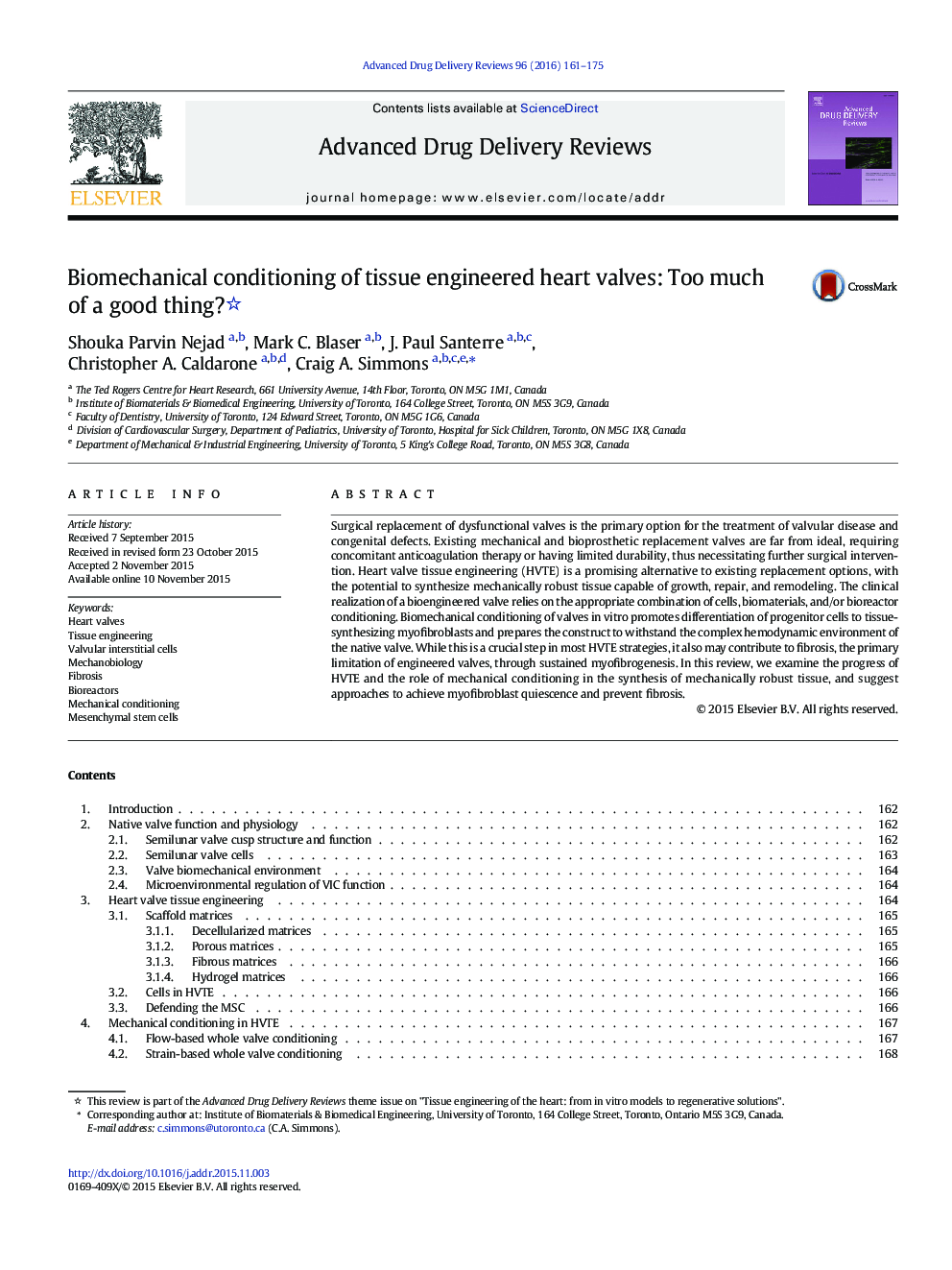| Article ID | Journal | Published Year | Pages | File Type |
|---|---|---|---|---|
| 2070803 | Advanced Drug Delivery Reviews | 2016 | 15 Pages |
Surgical replacement of dysfunctional valves is the primary option for the treatment of valvular disease and congenital defects. Existing mechanical and bioprosthetic replacement valves are far from ideal, requiring concomitant anticoagulation therapy or having limited durability, thus necessitating further surgical intervention. Heart valve tissue engineering (HVTE) is a promising alternative to existing replacement options, with the potential to synthesize mechanically robust tissue capable of growth, repair, and remodeling. The clinical realization of a bioengineered valve relies on the appropriate combination of cells, biomaterials, and/or bioreactor conditioning. Biomechanical conditioning of valves in vitro promotes differentiation of progenitor cells to tissue-synthesizing myofibroblasts and prepares the construct to withstand the complex hemodynamic environment of the native valve. While this is a crucial step in most HVTE strategies, it also may contribute to fibrosis, the primary limitation of engineered valves, through sustained myofibrogenesis. In this review, we examine the progress of HVTE and the role of mechanical conditioning in the synthesis of mechanically robust tissue, and suggest approaches to achieve myofibroblast quiescence and prevent fibrosis.
Graphical abstractFigure optionsDownload full-size imageDownload high-quality image (211 K)Download as PowerPoint slide
